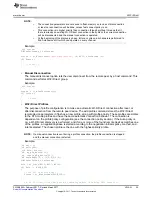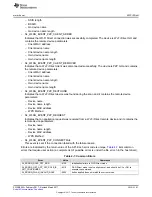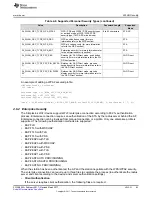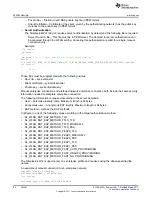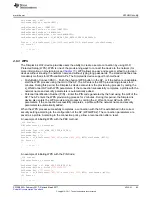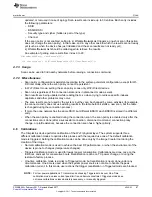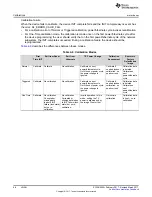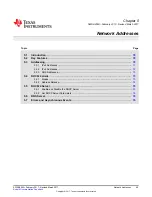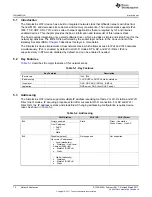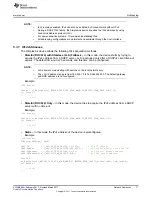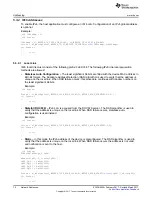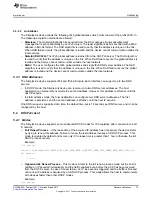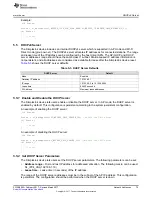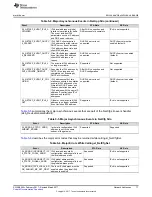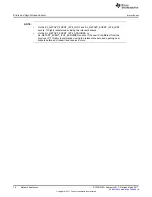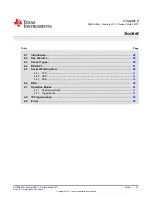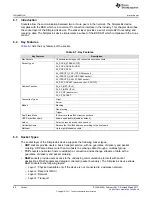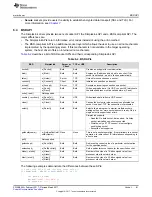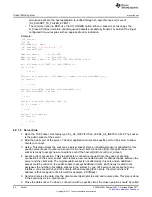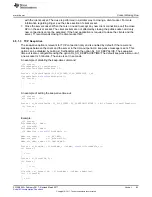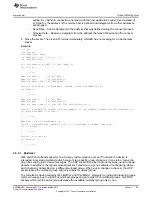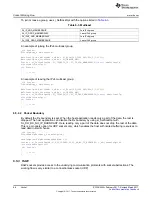
Addressing
73
SWRU455A – February 2017 – Revised March 2017
Copyright © 2017, Texas Instruments Incorporated
Network Addresses
}
5.3.2.2
Link-Global
The SimpleLink device allows the following IPv6 global address which must consist of the prefix 2000::/3.
The following acquisition methods are allowed:
•
Stateless:
The most significant 64 bits acquired from the RA messages (router advertisement
message that is sent periodically by an IPv6 router). The least significant 64 bits are filled with a MAC
address in EUI-64 format. The DAD algorithm is used to verify that the address is unique on the link.
When DAD failure occurs, the global address is invalid and the device cannot communicate outside the
local network.
•
Stateful (DHCPv6):
The IPv6 global address is learned from the DHCPv6 server. The DAD algorithm
is used to verify that the address is unique on the link. When DAD failure occurs, the global address is
invalid and the device cannot communicate outside the local network.
•
Static:
The user configures the IPv6 global address and single IPv6 DNS server address. The DAD
algorithm is used to verify that the address is unique on the link. When DAD failure occurs, the global
address is invalid and the device cannot communicate outside the local network.
5.3.3 DNS Addresses
The SimpleLink device supports IPv4 and IPv6 protocols. Each interface can support up to two DNS
servers:
•
In DHCP mode, the SimpleLink device can receive up to two DNS server addresses. The host
application can temporarily overwrite the second address. However, this address is effective until the
next IP acquire.
•
In static address mode, the host application can configure two DNS server addresses. The first
address is persistent, and the second address is effective until the next IP acquire
One DNS request is supported at a time, the default time-out is 18 seconds per DNS server, and it can be
configured by the host.
5.4
DHCPv4 client
5.4.1 Modes
The SimpleLink device supports some enhanced DHCP modes for IP acquisition after connection to a Wi-
Fi network:
•
Full Renew Process
– If the lease time of the acquired IP address has not expired, the device starts
by trying to renew this address. Failure to renew the last address invokes a full DHCP process. This
mode is enabled by default and occurs only if the lease time is greater than 1 hour (otherwise the full
DHCP process occurs).
Example:
_i16 Status;
Status = sl_NetCfgSet(SL_NETCFG_IPV4_STA_ADDR_MODE,SL_NETCFG_ADDR_FAST_RENEW_MODE_WAIT_ACK,0,0);
if
( Status )
{
// error
}
•
Opportunistic Renew Process
– This mode is similar to the full renew process mode but the host is
notified on IP acquired immedicably and the traffic enabled even before the ACK has been received
from the DHCP server. In case of renew failure, an IP loss event is triggered and the traffic is blocked
until a new IP address is acquired by a full DHCP process. This mode allows the host to communicate
with devices faster than other DHCP modes.
Example:
_i16 Status;

